Welcome to Africa! After collecting your bags exit the arrivals area where your transfer driver will be waiting for you holding a sign with your name on it. You will be shown to the vehicle and can relax on the short journey into Cape Town and your hotel.
On arrival at the Grand Daddy, you will have the rest of the day to explore the "Mother City" or simply catch up on some rest after the long journey.
Read my review of this wonderful hotel here: https://grownuptravel.co/accommodation-review-the-grand-daddy-hotel-cape-town-south-africa/
The hotel has an excellent restaurant for lunch or dinner, but there are also many great places to eat within easy reach of your accommodation.
A firm favourite is GOLD, where you can enjoy cuisine and entertainment from all over Africa.

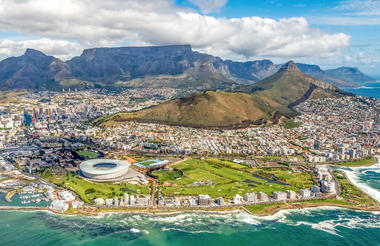
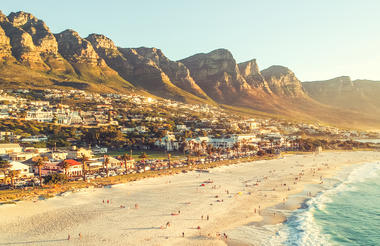
A full day to see the sights in Cape Town.
I recommend the Hop-on, hop-off Bus Tour to get your bearings and learn more about the city and its history.
You can hop off at the V&A Waterfront for some shopping or at the cable car station for Table Mountain.
End your day with some fine dining at one of Cape Town's many renowned restaurants or hit the dance floor at a nightclub - the choice is yours!
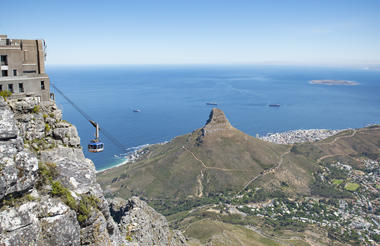
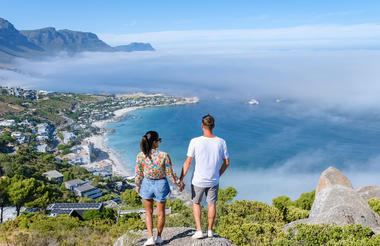
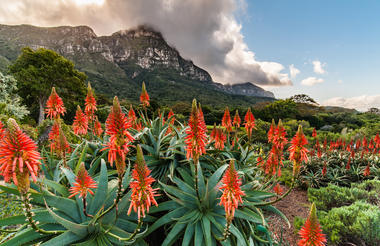
For your final day in Cape Town, how about a trip out to Robben Island? And perhaps a helicopter tour of the city from the air?
You could take a day trip around the peninsula with a high speed boat ride to visit the seal colony, or join a vintage car or motorbike tour along on one of the world's most scenic road trips - Chapman's Peak Drive.
One thing is for certain - you won't have any trouble filling your day...
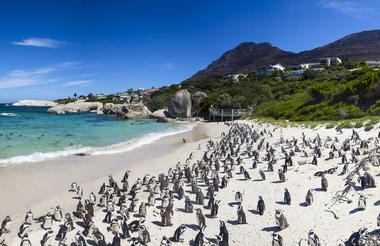

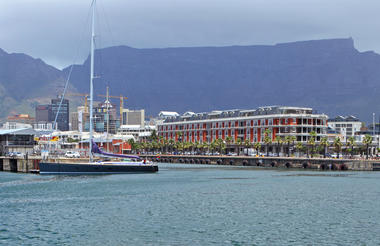
After three days in Cape Town, it's time to pick up your rental car and hit the open road.
If you have yet to experience the spectacular Chapman's Peak Drive, why not do so now with your own wheels? It is the perfect way to start your road trip!
When you are ready, follow the directions to the second oldest town in South Africa, Stellenbosch.
It's a charming place, known for its natural beauty and oak-lined avenues, Cape Dutch architecture, history and culture – and of course its wine.
Surrounded by wine farms, the town is abuzz with hotels, wine shops, cafés, restaurants, boutiques, art galleries and museums. It’s a manageable size so leave your car at the hotel and wander around on foot.
I recommend that you aim to get here around lunchtime. After checking in, have the front desk arrange a taxi out to Middelvlei where the welcoming Momberg family will introduce you to the way South Africans eat and socialise with a boerebraai (farm barbeque). The food is delicious, the wine is superb and of course there is a tasting room where you can buy your favourite bottle.
The Mombergs can arrange a taxi back to the town centre, after which you might fancy a siesta at the hotel, a dip in the pool or of course you can stroll the streets of Stellenbosch at your leisure.
Enjoy dinner at the hotel or at one of the many superb restaurants nearby.
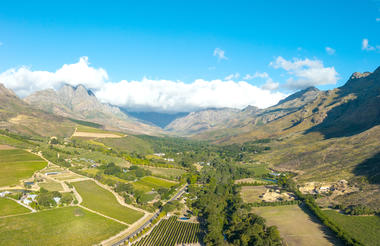
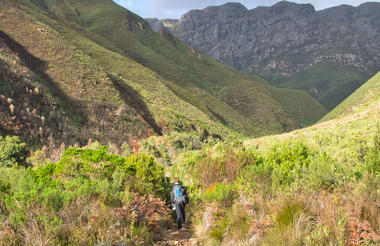
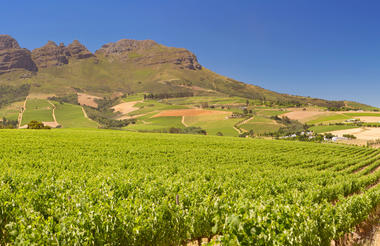
With another night in Stellenbosch, you can spend the day however you wish. A walking tour of the town itself is definitely worthwhile to learn about its history; then follow up with a visit to Kayamandi Township where a local guide will show you the other side of Stellenbosch . This is one that most tourists are unaware of and almost all miss.
After returning to the hotel, perhaps it's time to see a few more vineyards? If you really want to get the most wine for your money, the Vine Hopper minibus service is for you.
There are three different wine tour routes in the Stellenbosch region, each of which stops at up to six different wine estates. You can decide which of the farms you want to visit and how long you want to stay.



Leaving Stellenbosch after a hearty breakfast, it's time to head east. Follow the directions provided to reach the N1 highway. Continue on this road all the way to Robertson, worth a stop for more wine. Drive at your own pace and enjoy the scenery, which becomes more picturesque after Worcester, where you leave the N1 behind and switch to the R60. There are plenty of places to stop for a break or a bite to eat on the way.
Most people travelling east from Cape Town follow the Garden Route along the coast. However, for those looking to explore less touristy areas with more interesting and uncrowded sights, Route 62 is the way to go.
The R62, which gives Route 62 its name, begins shortly after Robertson and runs through the Langeberg Mountains. Not long afterwards, it is time for your first mountain pass - Kogmanskloof. It's a gentle introduction but dramatic nonetheless, bringing you to the lovely town of Montagu for your overnight stop.
There are several reasons why you might want to spend a night or two in Montagu. It is probably best known for its hot springs although it is also a haven for hardcore rock climbers - the cliffs here are some of the most challenging in South Africa. It is also a major fruit growing area and the peaches and apricots are both tasty and cheap as chips in the summer.
It's a great base for walking, with several marked trails. If that seems a bit too much like hard work you can book a tractor ride to the top instead.
And Montagu is also a very pretty town with attractive Victorian buildings.
It also has a microbrewery, which is a bonus.



After a relaxing sleep, it's back on the road again as you continue into the Klein (Little) Karoo - a 290km strip of semi-desert that runs along the edge of the vast wilderness of the Groot (Great) Karoo.
The Little Karoo is characterised by huge areas of open land but also farms, vineyards, mountain ranges with twisting passes. There are also several charming dorps (rural towns) each with plenty to offer the visitor.
A pleasant 40-minute drive further east of Montagu, during which the road begins to slowly climb, brings you to another Route 62 favourite, Barrydale.
It's a good place to stop and eat at one of the many cafes and restaurants.
Diesel 'n Creme is very popular, serving great food, legendary ice cream, cold drinks and with plenty of fun decor to feat your eyes on.
Barrydale itself is a lovely rural town offering a glimpse into real Karoo country life. The main road has vineyards on both sides and the place has become popular with artists escaping the hustle and bustle of the big city. As you'd expect there are a number of arts and crafts shops and galleries, but there is also a good range of excellent restaurants and a couple of appealing accommodation options.
Once you are ready to move on, the next stop is a South African legend - Ronnie's Sex Shop.
It sounds like a weird place to visit but trust me on this one. Oh and it's not a sex shop, just to get that straight.
Slap bang in the middle of nowhere on Route 62 and calling itself the “oddest pub in South Africa,” Ronnie's Sex Shop is indeed odd. With a ceiling covered in underwear and that name which came from a practical joke, it's also a magnet for travellers from all over the world.
Back in the 1970s, Ronnie Price decided to open a farm stall by the road to sell his fruits and vegetables. Not wanting to confuse punters, he painted “Ronnie’s Shop” in red paint on the white facade of his roadside cottage.
But for a laugh (you have to make your own entertainment out here in the bush) a few of Ronnie’s mates changed the signage by adding another word and thus “Ronnie’s Sex Shop” was born. At first, Ronnie wasn’t amused by the prank, but when another friend suggested he open a pub, he saw a golden opportunity to use somewhat more imaginative marketing than originally planned.
He converted the farm stand into a fully stocked bar, serving coffee in the morning and booze at night. He presumably figured that if he built it, they would come. And they did. The countless bras - most of which are signed - hanging from the roof testify to the vast number of visitors Ronnie has welcomed. The rest of the decor is just as strange, with baby dolls, teddy bears and clown wigs scattered around.
Ronnie still runs the bar and is always up for a chat and a joke and with any luck he'll be there when you drop by. Bring a pen to add to the graffiti covering the walls - or perhaps a pair of underpants to leave behind?
It's another hour or so from Ronnie's to Calitzdorp - two if you stop to take photos and admire the view at regular intervals.
Your driving for the day is nearing its end and the scenery just keeps getting better as the valley narrows and the road climbs.

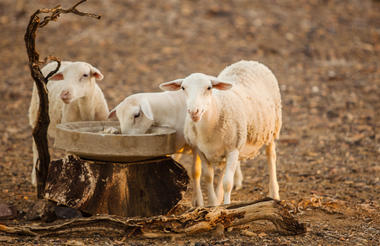
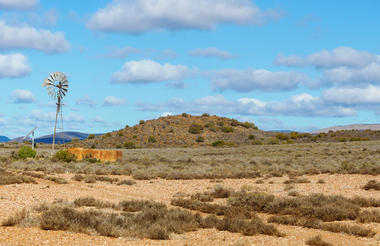
Calitzdorp is (another) quaint little town on Route 62, nestled in the heart of the Klein Karoo. It's a sleepy dorp but is known as the port wine capital of South Africa, due to the quality of the port wines made by the local wine cellars. More importantly - for me at least - top quality reds and whites are also produced in Calitzdorp mainly at the Boplaas, De Krans, Axe Hill and Calitzdorp vineyards.
The historic buildings of the town centre are well preserved and it's a delightful place to wander.
Many of the houses are beautifully restored and decorated with stunning flowers.
If you want to visit several of the vineyards there is a well-signposted wine route connecting them - you can grab a map at the tourist information office or from most hotels and guest houses - the climate here is perfect for growing the grapes.
If you only have time for one winery, I recommend De Krans Vineyard. You will receive great advice at the wine cellar and the red they suggested for me was fantastic.
Calitzdorp has some excellent places to eat, the lamb shank with a local red at Die Handelshuis Restaurant is hard to beat, in my humble opinion.
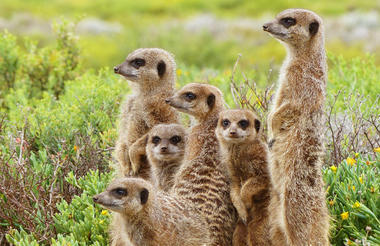
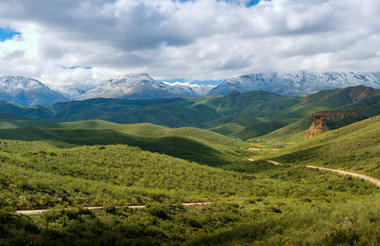

Enjoy a wonderful breakfast at the hotel before packing your bags once more.
Today you can look forward to some exciting and dramatic stretches of road, starting right away just outside Calitzdorp.
Instead of returning to the R62 straight to Oudtshoorn, divert onto what the Rough Guide accurately describes as "one of the best drives you'll ever do in South Africa" - through the Groenfontein Valley.
The tarmac gives way to dirt road not long out of Calitzdorp, but there is nothing that a regular sedan can't handle.
The twisting, narrow road passes through the foothills of the Swartberg mountains, crossing streams and passing Karoo farms, homes and a properly off-the-grid retreat.
The whitewashed cottages are typical of the area.
Allow enough time to enjoy the views and stop for photos - it's a magical journey. I didn't see a single person or vehicle on my trip.
Rejoin the tar at the R62 to Oudtshoorn, known as the ostrich capital of the world. There are plenty of farms where you can learn about this strange bird - Africa's biggest.
Now it's time to bid farewell to the R62, which continues almost all the way to Jeffreys Bay in the Eastern Cape.
But another highlight of this road trip is found less than an hour north of Oudtshoorn - the Swartberg Pass. Considered one of the finest mountain passes in the world, the Swartberg Pass is an untarred road that winds to the summit 1,585 metres above sea level in steep zig-zags and sudden switchbacks with breathtaking views at every turn.
The Pass is a 27 km-long gravel road with steep inclines. In good weather, such as when I visited, the road can be tackled with any vehicle. Take your time and drive slowly where the road is rough.
The Pass was constructed between 1881 and 1886 as part of a drive by the government of the day to open reliable routes between the interior and the coast.
It takes about an hour to drive the entire length of the Pass but allow plenty of time for photos and simply taking in the scenery at viewpoints.
You can explore more about the history and stories of the Swartberg Pass at the Fransie Pienaar Museum in Prince Albert (your overnight stop) where there is an entire exhibition on the construction of the Pass.
The drive is an amazing experience.
From the end of the pass you have just 10 minutes more on the (eventually asphalt) road to reach your last overnight destination in the Karoo, Prince Albert.
Situated at the foot of the Swartberg Mountain range amidst spectacular scenery, Prince Albert enjoys a perennial water supply in this arid region – though regular drought conditions mean that water conservation is a way of life.
The climate is superb with an extremely high number of sunny days each year, spectacular night skies and pure clean air.
Built in the 18th century, the town is a well preserved gem, with beautifully preserved Cape Dutch, Karoo and Victorian buildings. Seventeen are listed as local provincial heritage sites.
Prince Albert is the perfect base for exploring the Swartberg region (much of which is part of a UNESCO World Heritage Site). The Garden Route resorts and beaches are just two hours south by road.
The town also offers many outdoor activities such as hiking, mountain biking, fossil-walks, birding and botanical trails. It is well known for its sun-ripened fresh and dried fruit, especially figs and apricots, and Karoo lamb, olives, olive oil and handmade cheeses are all local specialities.
Check in to your hotel and enjoy Prince Albert - whether you want to get active or just enjoy the slow pace of life.



When it is time to leave head north and soon you will reach the N1, the national route that runs from Cape Town through Johannesburg and to Beitbridge on the border with Zimbabwe. It forms the first section of the planned but never realised Cape to Cairo Road.
This part of it isn't terribly interesting or that scenic, however, making its way through an almost completely flat and arid landscape. But don't worry, your next stop is anything but ordinary - the historic village of Matjiesfontein.
A Scotsman by the name of James Douglas Logan, who was superintendent of this stretch of railway, bought land at Matjiesfontein because he believed the clean air to be beneficial for his weak chest, and opened a refreshment station for the passing trains. This was so successful that the business soon formed the nucleus of a growing village.
All of the buildings bear testament to their Victorian past, giving the tiny settlement a slightly unreal feel. The unexpectedly grand station and the Lord Milner Hotel are famous highlights - the latter complete with turrets, frills and balconies with fountains at its entrance.
And this is where you will be staying the night.
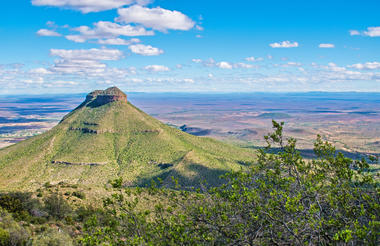
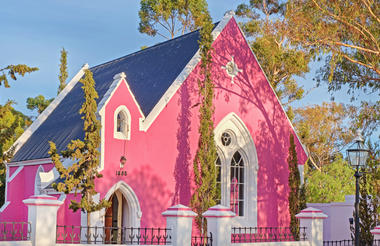
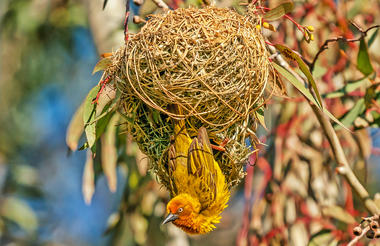
After breakfast, get back on the N1 and continue west. The views become more interesting as the terrain becomes more mountainous. Turn off the highway at after Touws River and take the R46 for the hour-long drive to Ceres, the main town in this renowned fruit-growing valley.
Next turn north on the R303 with the Cederberg Mountains on your right. This area is wild and warm and has a raw, dramatic beauty. Be prepared for towering mountains, stunning purple and orange sunsets with the scent of orange blossom in the spring.
There are plenty of wild animals in the area, too - baboons, small antelope and even leopard and aardwolf if you are very lucky.
Your accommodation was just over 40 km from the main road on a good gravel road and you have two nights to enjoy this natural paradise.
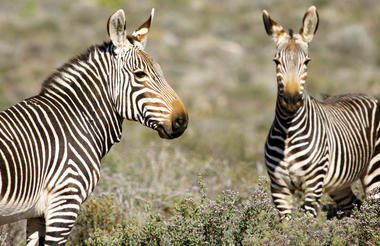

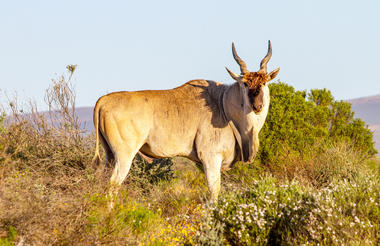
After breakfast, the choice is yours - you can walk or hike without another person in sight, enjoy bouldering and climbing at Rocklands, discover the beautiful bird life, swim in the clear mountain rock pools or marvel at San rock art.
Or simply relax and enjoy the exhilarating peace of this unspoilt paradise.
The Cederberg has an exceptional botanical diversity, being part of the Cape Floral Kingdom of South Africa, and among the twisted rock formations, farmers cultivate the world-famous healthy rooibos tea, found only in the Cederberg of South Africa.
A heaty dinner awaits when your day is done.



The route today will take you to the far west of the Western Cape, for your last night on this road trip near the coast. But there are a couple of worthy detours on the way.. First up is the Middelburg Pass.
Instead of driving 100km back the same way south to Ceres, return to the R303 that connects that town with Citrusdal to the north.
Now on the map, and on the Satnav, this looks like a regular tarmac road with a nice mountain pass as it nears Citrusdal. The reality is somewhat different and a lot more fun - if perhaps unexpected.
The road enters a narrow, green valley passing farms and villages and then a sign comes up on the left showing that the asphalt is about to give way to dirt and/or gravel.
From now on another exciting drive awaits - with several full hairpin bends and places where the road is not much wider than your car.
After many twists and turns the tarmac reappears - but this doesn't last long as the road is only asphalted for the most extreme gradients. Finally you reach the summit with its fabulous views and a small parking area. You'll probably want to get out and take pictures before you continue and enjoy the scenery from behind the wheel.
Descending the pass on the other side is even more spectacular and eventually the road becomes surfaced again for the rest of the way to Citrusdal.
Have a break in town to get your breath back, and a bite to eat if you are feeling hungry - Grapevine is an excellent choice with its delicious cakes and coffee. Then head south once more, this time on the fast, straight, flat and slightly less fun N7 highway.
After about 80km of this turn onto the R311 in the heart of Swartland wine country. There are many vineyards here too, but I wholeheartedly recommend Allesverloren. I had discovered their wines in the duty free shop many travels ago and they have become family favourites.
They also have an excellent on-site restaurant if you are after something substantial to eat, or you could have lunch in the pretty local town of Riebeek-Kasteel before continuing to your final overnight destination, Darling.
The tourist office in Darling market the town thus: Peace and quiet is foremost. A calm and peaceful retreat from the stresses and strains of the hectic city life. A chance to escape the daily grind and re-energize the soul.
Darling certainly delivers the above, and being only an hour’s drive from Cape Town it is a popular excursion from the regional capital.
There are also a number of other attractions, however. There’s craft beer and a taproom at Darling Brew, olives and olive products to be tasted at Darling Olives and Het Bos (by appointment). The top end of the Main Road boasts an artisanal cheesery and deli plus The Darling Wine Shop. Wine tasting at Ormonde, Cloof, Darling Cellars and Groote Post along with its long established, family friendly Hilda’s Kitchen. A San centre at nearby !!Khwa ttu and the beach at Yzerfontein is just a short drive away.
Back in Darling itself you can visit the Darling Museum and eat at a number of restaurants and coffee shops like Bistro Seven, Marmalade Cat, Café Mosaic, Chicory Cheese Café and Brig’s Barn.
There’s lots of accommodation to suit all tastes and budgets and, best of all, even a toffee and caramel tasting at Darling Sweet.
You will probably arrive in the late afternoon so I would suggest a gentle wander around town and a fantastic curry for dinner at Bistro Seven.



You have time to explore Darling this morning after the superb breakfast at your guest house.
When you are ready, head back to Cape Town along the N27 coast road.
If you are very lucky and we have made a reservation a long way in advance, you could have a meal at the tiny Wolfgat restaurant in Paternoster on the way back. It was named the Best Restaurant in the World at The World Restaurant Awards in Paris in February 2019.
Or you could simply return to Cape Town and deliver your rental car before enjoying another night in the Mother City or returning home after a fantastic road trip.



